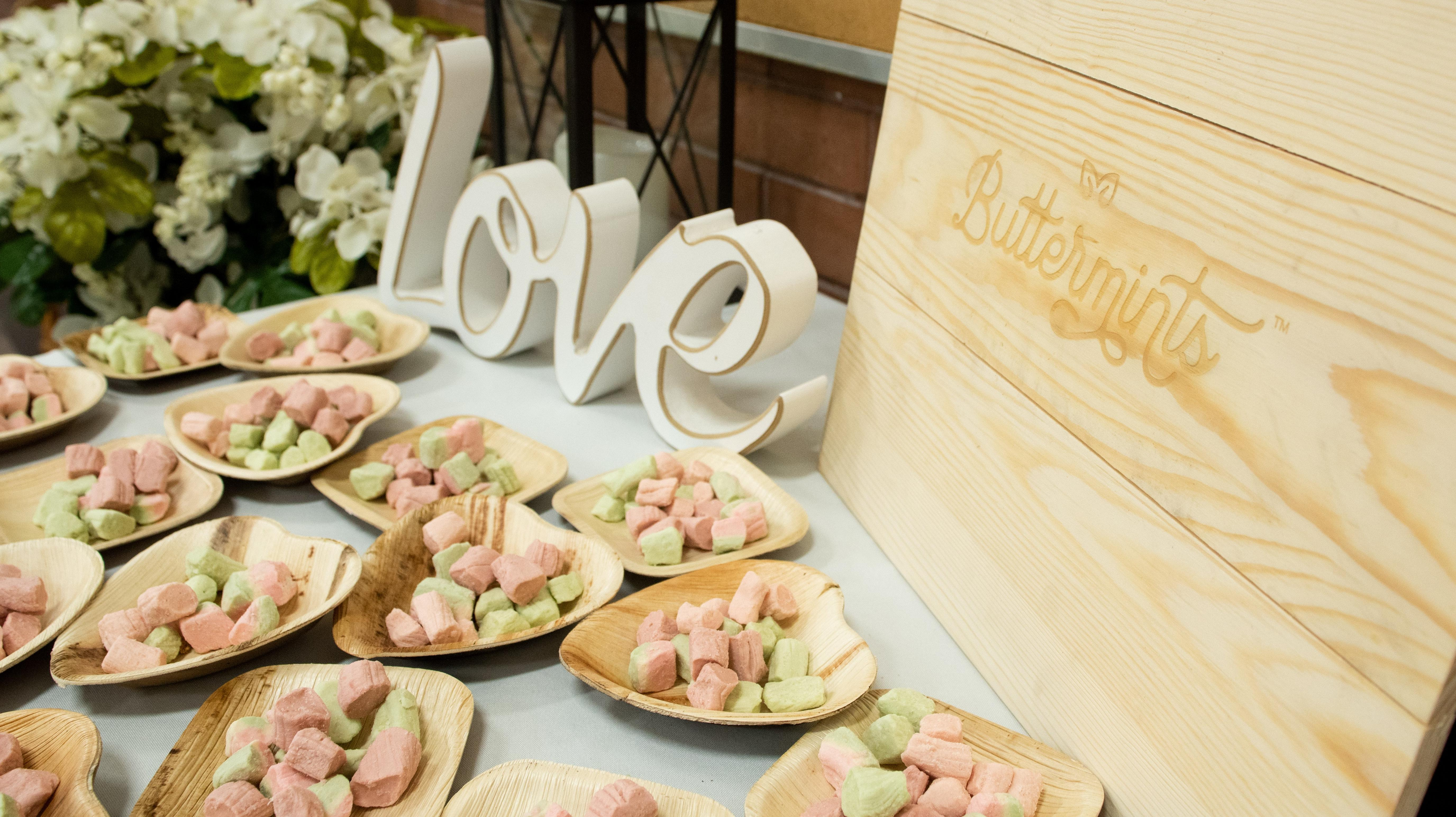Can Buttermints Overcome Their Old-School Reputation?
Everything old is minty again for one family-owned candy company in southern Utah.
If you've stayed in a fancy hotel, dined at a fancy restaurant, or attended a fancy baby shower, you've had a buttermint. You know the ones. They're the sweet, pleasantly chalky, and conveniently wrapped mints that are shaped a bit like molars. They're usually issued upon farewell, as if to say "thank you for dining with us" or "thank you for staring at my great-grandfather's corpse during this open-casket event."
Traditionally made with butter, sugar, and peppermint oil, buttermints are certainly nostalgic, with origins in the late 1880s. Now, one family-owned candy company is asking: why not capitalize on that nostalgia to make buttermints cool?
Clark Barlow founded Buttermints to spread the word about his family's scrumptious candies, which are made using a tweaked version of his grandmother's go-to recipe. It's important to note that Barlow's company, Buttermints with a capital "B," did not invent buttermints, the generic candy variety with a lowercase "b." Still, that won't stop Barlow from trying to tackle Big Buttermint.
"One of my biggest things was getting the Buttermints.com website domain, because nobody's been using it at all," he says slyly. "I thought the term 'buttermints' referred to some huge proprietary brand—like Peppermint Patties, for example—but that's not the case."
With that, Barlow set out to position the family business as "the original buttermints company," despite the fact that the company was only founded a few years ago. Clark explains that adopting the not-yet-trademarked Buttermints moniker would, in theory, cast his competitors as "copycats." (I was duped by this. It wasn't until I read the fine print on the Buttermints packaging that I saw the words "established in 2013.")
Positioning your brand-new company as The Original takes some guts. Fortunately, Barlow was confident in his wares. "I started giving them out to people, and their reactions are priceless," he says. "We have a better product than a lot of people because we're not using corn syrup and those types of ingredients. We also offer flavors unlike anyone else. We have a big vision, and that's what's going to take us worldwide."
When Barlow says "flavors unlike anyone else," he means it. It's not just the blue agave sweetener and essential oils that set Buttermints apart; at this point, the brand has 21 flavors on the market, but Barlow claims they've concocted a total of 46. His personal favorite? Raspberry lemonade. "The older generation understands what buttermints are, but they've never seen them in a key lime flavor," Barlow says, laughing.
Of course, before they could concoct 46 flavors (some of them questionable), the Buttermints team had to tweak Barlow's grandmother's original recipe. "The challenge was that her cookbook featured the old ingredients, and it was very specific," Barlow says. "Unfortunately, you can't just go and buy the specific brand of butter and sugar recommended in her day, because they don't exist anymore."
The Buttermints culinary team was forced to guesstimate. "It took them 20 or 30 tries before they got a batch to come out right," Barlow says. "When we first started doing it [on a larger scale], we were lucky if we got one out of every 10 batches to work." In hopes of establishing some consistency for the brand's massive eight-pound batches, the team tinkered with everything from room temperature and humidity to sugar brands.
Eventually, the recipe was perfected, and the business was born—but how could this fledgeling operation set itself apart from legacy candy companies with major contracts, like Hospitality Mints, which, per the brand's website, sells more than 1.6 billion mints annually? Even smaller operations—like Arnold's Candies, in business since 1953—do big buttermints business.
"Buttermints have remained a best seller for us for all of the reasons you would expect," says Rachel Wood, Arnold's Candies director of quality control and operations. "The nostalgia... is like no other. Whether you remember them from your favorite meal at a restaurant or that candy dish you snuck into at grandma's house, they have been in our lives for so long we find a place in our hearts for them that just can't be replaced by any old mint. That is why our buttermints have remained a best seller for us."
But Barlow didn't care about that. Barlow wanted to make buttermints—and Buttermints—cool. Barlow wanted to become the bad boy of buttermints. To do that, he decided to lean into vice. "With something like a chocolate or a caramel, you'll eat five or six in one sitting," he says. "But after a bad day, we want people to reach for Buttermints instead. We want them to reach for Buttermints as their vice." That's why he decided to unwrap the mints, delivering them in snackable bags instead of individually packaged portions.
Will Buttermints take the world by storm the way Barlow expects? It's hard to say; he claims the brand receives regular influencer solicitations, and he's currently in contract negotiations with a few large retailers in the mountain region near Buttermints' Utah headquarters. And this certainly wouldn't be the first time a confectioner has capitalized on nostalgia. Dylan's Candy Bar sells a gigantic "nostalgia gift bucket" for $75, complete with Fruit Stripe Gum and Satellite Wafers. You can even sign up for a monthly "retro candy subscription" online if you've got a spare $300 burning a hole in your pocket. But will Barlow's unique model—putting a hip, snackable spin an old-school candy—work for the nostalgic age?
If not, he should take a crack at strawberry bon bons.
